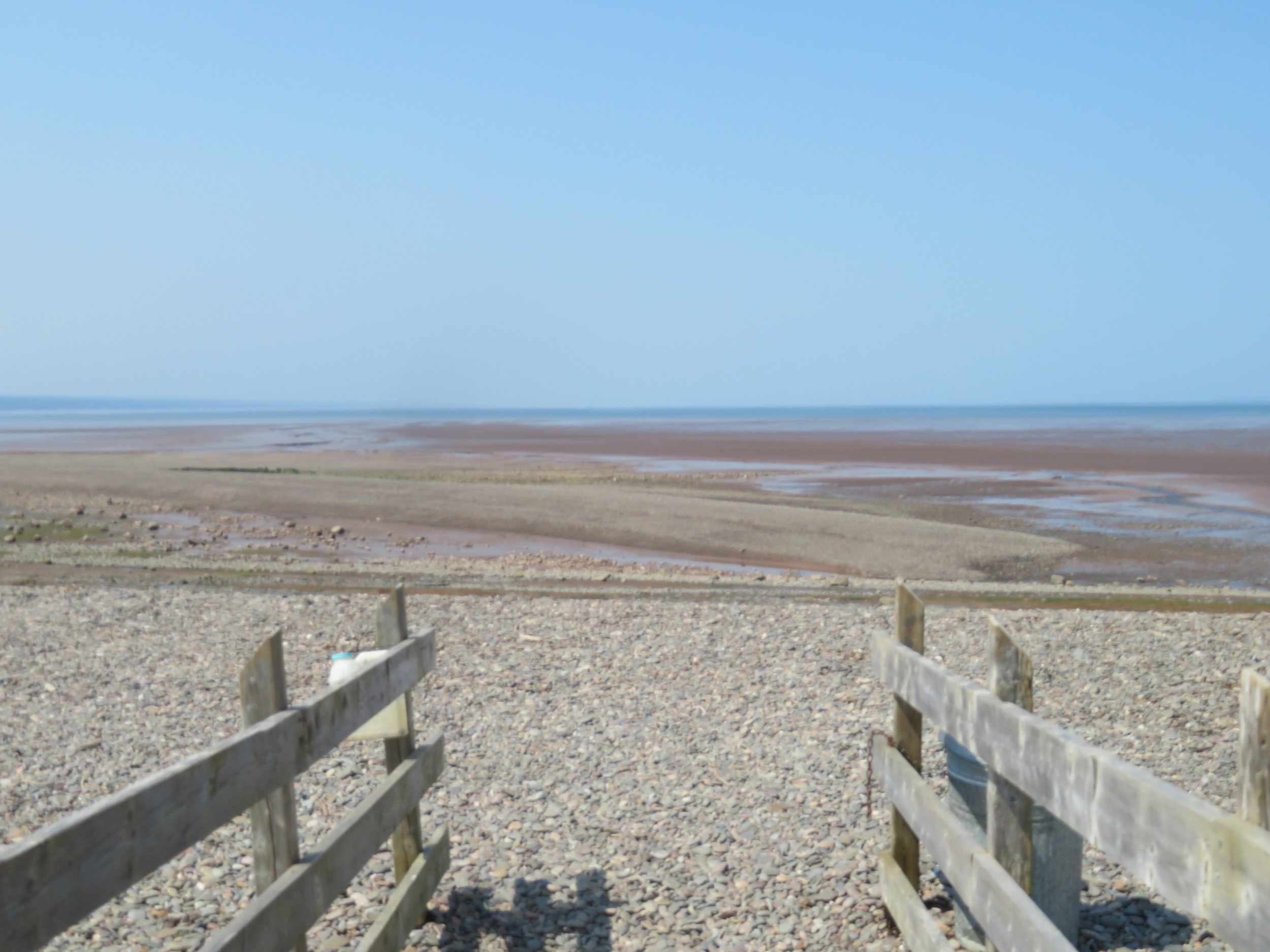Nova Scotia’s Fundy Coast
/Our route along Nova Scotia's Fundy Coast
Once over the Confederation Bridge, we headed back to Nova Scotia to complete our unfinished touring of the province. The Fundy Coast is renowned for its high tides… the highest tides in the world, in fact. We’d experienced the tremendous tidal changes back in 2002 when we sailed along the Fundy Coast in Nova Scotia, New Brunswick and Maine. Experiencing them from land was another story, but certainly far less intimidating.
We started our day by sleeping in and it felt glorious… no early wake-ups, no bicycling today, no aching butts. Burntcoat (aka Burncoat) Head Park on the Minas Basin in the little town of Noel on Fundy’s southeast coast seemed like a good place to begin. This location is where Guinness measured the ‘world’s highest tide’, ~53 feet (16m) in ~6 hours. It really gushes in and out with a fury.
Burntcoat Head Park - Home of the World's Highest Tides
Burntcoat is a lovely park with shaded picnic tables and large grassy areas that lead to a gravel path down to sea level. Because of the intensity and speed with which the high tide returns, warnings are posted all around the park.
Walking on the seabed should be completed and visitors should be off the seabed within three hours of the next high tide. We arrived at the wrong time to begin a walk. Visitors, heeding the warnings, were all returning to higher ground. We did appreciate the views however.
Walking on the seabed at low tide
We toured the lighthouse, a relic of the original which succumbed to erosion. A subsequent lighthouse, moved higher up on land, burned down. The replica remains on solid ground… so far. We climbed the stairs to the top. It was stiflingly hot and the visit was quick. We took advantage of the picnic area for a leisurely lunch, then continued on our way.
Walton Lighthouse, the last remaining original lighthouse in Hant’s County, was our next stop along the route. Built in 1873 for a cost of $620, it was once the brightest light in the upper Fundy Bay.
Walton Light, once the brightest light on the upper Fundy bay
A short footpath, Ted’s Trail, led through a copse of trees to great views of the Bay of Fundy far below.
The view from Ted's Trail above the Fundy Bay
A hike at Cape Split Provincial Park sounded like a great way to spend the rest of the afternoon. The road climbed and climbed and climbed. We stopped briefly at the ‘look off’ parking area with thoughts of continuing on. We eyed the ‘Look and Lick’ ice cream stand with its long, long lines and kept it in mind for our return trip.
The panoramic views of farms and vineyards far below were so beautiful and our parking spot was so appealing, we decided to just stayed put. We monitored the line at Look and Lick and when it finally subsided, got our ice cream cones, sat on a nearby park bench and took in the view.
A panoramic view from high atop the Look Off
We managed to rise at a reasonable hour and headed straight to Cape Split Provincial Park. We parked near the trailhead, lathered up with sunscreen, grabbed our trekking poles and headed for the trail. Before we were even across the parking lot, three large commercial tour buses pulled up and disgorged all their passengers onto the trailhead… 150+ people. The passengers milled around standing at the trail entrance waiting for their guide. This was our cue to exit. Grrr!
Disappointed, we drove back down the road a couple of miles and spotted Wharf Road. A short, but pleasant path led to a boardwalk and a broad expanse of seabed upon which to tromp.
A short boardwalk opened up to a huge expanse of seabed
We walked way out, keeping tabs on the time. As usual, I collected interesting wave-tumbled, smooth stones till my pockets were drooping, but after a short discussion with David, discarded most of them by the time we got back to Blanche. ‘There’s only so much room for rocks in Blanche, Marcie, and I’m pretty sure we have our quota.’ Blah, blah, blah.
We walked and walked leaving the shoreline far behind
Back on a narrow country road past sprawling farms, we spotted two bald eagles sitting in a treetop. David pulled off the road and we watched and photographed them. How regal!
A pair of majestic bald eagles caught our attention
There is no continuous road along Nova Scotia’s Bay of Fundy coast. Whenever I spotted something of interest on the map, we veered off onto small access roads to see it. Lighthouses are always an attraction and Nova Scotia Nova has over 160 historic lighthouses, more than any other Canadian province. We took a slight detour to visit Hampton Light. It was scenic, but the best part was noticing a face peeking out of the lighthouse window.
Scenic Hampton Lighthouse
We particularly enjoyed the face in the lighthouse window
We spent some time studying the Nova Scotia road map. Archaic perhaps, but without it we would not have spotted the Digby Neck, a long, thin peninsula that extends way out into the Bay of Fundy. Once we realized that it was drive-able to the very end… with a ferry ride or two required, we knew our next itinerary. Guess where we’re going next time? Come on along… you won’t even get your feet wet!















